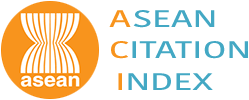Gonadotoxic Effect of Combined Chemotherapy on Anti Müllerian Hormone (AMH) Level in non-Gynecologic Cancer Patients in Reproductive Age
Abstract
Objective: To assess the effect of combined chemotherapy on levels of Anti-Müllerian Hormone (AMH). Method: This is a prospective cohort study on 12 non-gynecologic cancer women aged 20 - 40 years who received combined chemotherapy treatment. AMH levels and menstrual pattern before and after three months of chemotherapy were examined. The relationships between age, chemotherapy regimens and the cumulative doses on the change of AMH were also analyzed. Result: The median age of subjects was 37 years (range 20 - 40 years). Pre chemotherapy AMH analysis revealed an inverse correlation between age and AMH levels (r = -0.715; p = 0.009). AMH levels after 3 months of combined chemotherapy drastically declined to 84.6% (p = 0.002). Multivariate analysis indicated that age and total cumulative dose were the main factors contributing to the AMH levels reduction (r = -0.679; p = 0.002 and r = 0.405; p = 0.027). Ten of 12 subjects (83.3%) experienced amenorrhea after 3 months of chemotherapy and had lower level of pre and postchemotherapy AMH compared to those who still maintained normal periods (p = 0.03 and 0.02). Conclusion: AMH levels in non-gynecological cancer women who received combined chemotherapy decreased dramatically after 3 months of chemotherapy. Main factors that contribute to this were the cumulative dose and age. Most of these subjects experienced amenorrhea after 3 months of chemotherapy. [Indones J Obstet Gynecol 2010; 34-3: 119-24] Keywords: ovarian reserve, chemotherapy, Anti Müllerian Hormone (AMH), ovarian function, gonadotoxicDownloads
Download data is not yet available.













